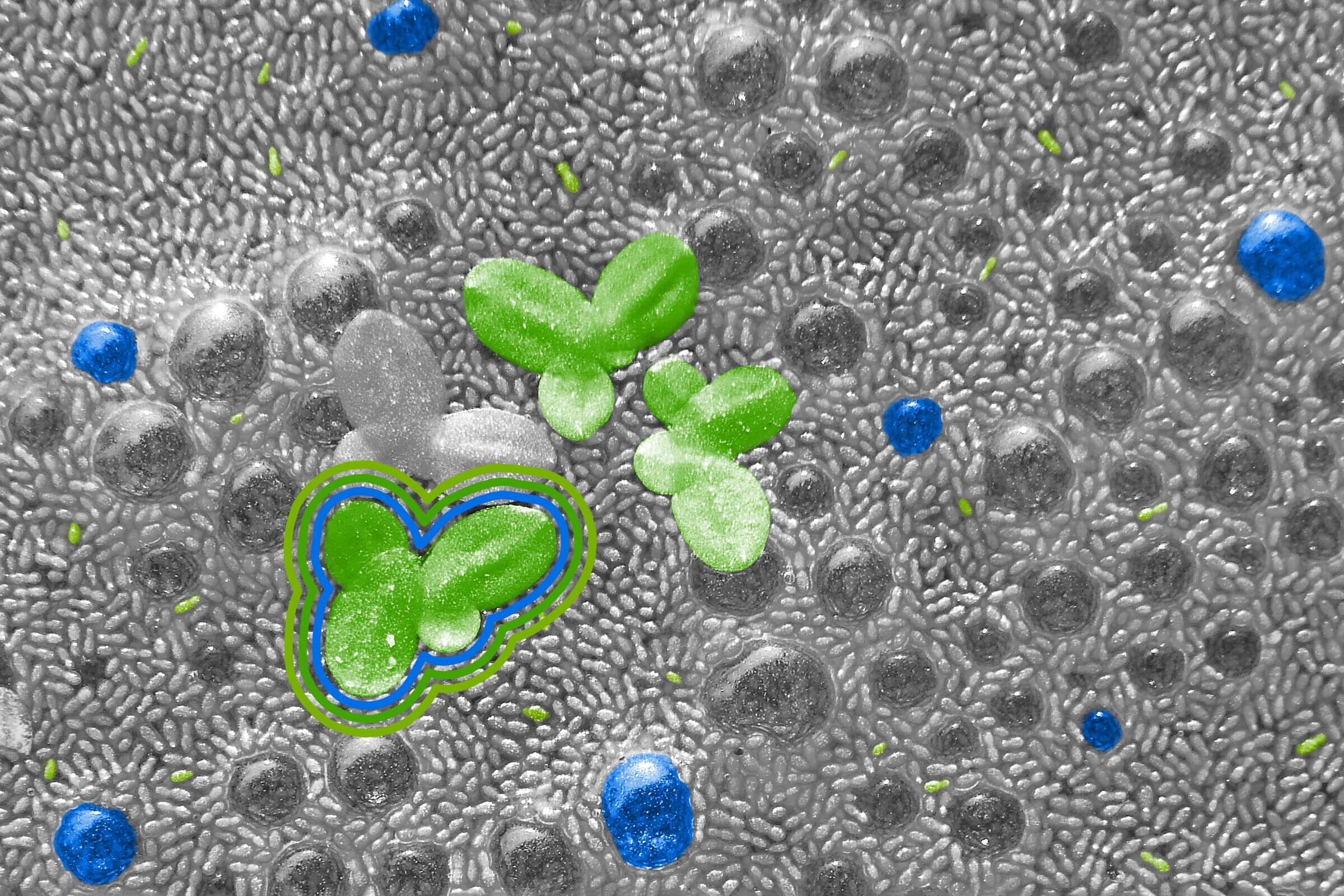
The smallest flower in the world is the size of a candy sprinkle.
The world’s smallest flower is commonly found throughout North America (and the globe), but its bloom is so small, you may never catch a glimpse. Watermeal, aka various species of the genus Wolffia, is an aquatic plant that thrives in slow-moving ponds, marshes, and lakes; to the naked eye, clusters of watermeal can resemble a floating raft of algae. Under a microscope, it’s easier to see just how tiny individual watermeal plants are — they measure around 1/42 of an inch long and 1/85 of an inch wide, or about the size of a candy sprinkle. In fact, watermeal is so small that about 5,000 individual plants can fit inside a thimble. When they bloom, they’re rarely noticed. What’s more, the even-tinier fruit they produce is the smallest fruit in the world, and cultivated in some parts of Southeast Asia as a food source.
But it’s not just its minuscule size that makes watermeal distinctive. Unlike most plants, those in the Wolffia species have no roots, which allows them to float to the surface of water. There, the plants can grow rapidly and reproduce at top speeds. While capable of producing seeds, watermeal more commonly reproduces asexually by creating daughter plants that emerge from their buds. By producing two new plants every three days, watermeal can double its size in just 48 hours and quickly overtake waterways, choking out other aquatic life. However, in healthy aquatic environments, watermeal can be kept in check by providing nutrient-dense food for fish and waterfowl, and can also clean up waterways by removing excess nutrients — a reminder that even the smallest organisms have a role to play in the world around us.
Microscopic watermeal plants have something in common with the gigantic Rafflesia arnoldii: They both survive without roots. Yet the similarities end there. Rafflesia arnoldii also lacks leaves and stems, and the flowers are more akin to parasites. Considered the largest flower in the world, with blooms measuring 3 feet wide and weighing up to 20 pounds, these plants attach themselves to other living greenery, absorbing nutrients from their hosts. When they do bloom, Rafflesia arnoldii — aka corpse lilies — produce a putrid smell similar to the stench of rotting meat. The disgusting odor has a specific purpose: It attracts carrion flies that help with pollination. Rafflesia blooms last just about a week, but the plants are capable of living for years in the rainforests of Sumatra and Borneo.

